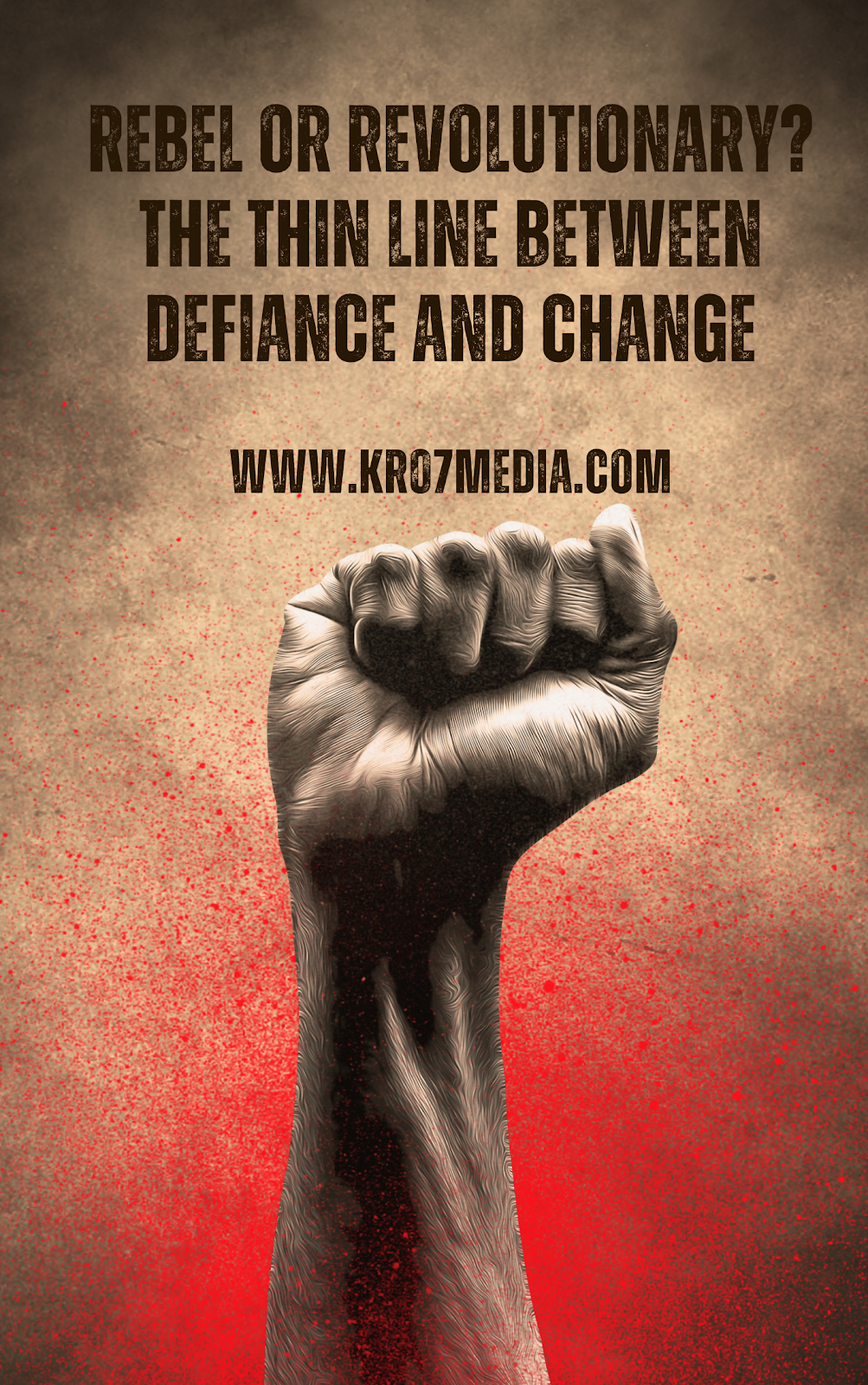In the annals of history, figures who have challenged the status quo have often been labeled in two distinct ways: as rebels or as revolutionaries. Though these terms are sometimes used interchangeably, they carry different connotations, rooted in both the intent and the outcomes of their actions. Understanding the subtle differences between a rebel and a revolutionary can shed light on how societies view defiance and change, and how history remembers those who dare to disrupt the established order.
The Rebel: Defiance Without Direction?
A rebel, in its most basic sense, is someone who resists authority or control. This resistance is often rooted in dissatisfaction, anger, or frustration with the current system. Rebels are driven by a desire to oppose, but not always by a clear vision of what should replace what they seek to overthrow. Their actions are often reactionary, fueled by a sense of injustice or a refusal to conform to societal norms or laws.
Rebellion, in many cases, is seen as chaotic and destructive. It disrupts, but it does not necessarily build. Historical figures such as Spartacus, the leader of the slave revolt against the Roman Republic, or Nat Turner, who led a slave rebellion in Virginia, are often classified as rebels. Their actions were bold and defiant, yet they lacked a structured plan for what would follow the collapse of the existing system. The goal was primarily to destroy, escape, or undermine rather than to construct a new order.
Rebels challenge authority and question the legitimacy of power, but they do so in a manner that can sometimes seem aimless or nihilistic. They are often remembered for their courage and audacity, but also for the chaos they leave in their wake. In many ways, the rebel is a necessary force in society, providing the spark that can ignite broader discussions about injustice and inequality. However, without a clear path forward, rebellion can quickly fizzle out, leaving little in the way of lasting change.
The Revolutionary: Change with a Vision
A revolutionary, by contrast, is not only a rebel but also a visionary. Revolutionaries seek not just to challenge the current system but to replace it with something fundamentally different. They are motivated by a clear ideological framework or a specific goal, whether it be political, social, or economic. Their defiance is directed toward a comprehensive transformation of society.
Figures such as George Washington, who led the American Revolution, or Che Guevara, who played a significant role in the Cuban Revolution, are often seen as revolutionaries. Their actions were not just about opposing existing power structures but about creating new ones. They were driven by a vision of what society could and should be, and they were willing to employ both strategic and tactical measures to achieve their goals.
Revolutionaries are often idealized for their commitment to change and their ability to inspire others to join their cause. They are seen as agents of progress, even if the path to that progress is fraught with violence and upheaval. However, revolutions come with their own set of challenges and contradictions. The very qualities that make a revolutionary effective—passion, determination, and an unwavering belief in their cause—can also lead to dogmatism, authoritarianism, and the suppression of dissent within their own ranks.
The Thin Line Between Rebellion and Revolution
The line between a rebel and a revolutionary is thin and often blurred. Many figures who start as rebels can evolve into revolutionaries as their ideas become more defined and their movements gain traction. Conversely, revolutionaries can be dismissed as mere rebels if their efforts to implement change are unsuccessful or if their vision fails to resonate with a broader audience.
The distinction also depends on perspective. One person’s revolutionary can be another person’s rebel, depending on the observer’s values, beliefs, and stake in the existing system. For instance, during the American Revolution, British loyalists viewed the colonial insurgents as rebels committing treason, while those fighting for independence saw themselves as revolutionaries working toward a just and necessary new order.
The legacy of rebellion and revolution is also shaped by time and context. What may start as a rebellion can be reinterpreted by future generations as a revolutionary act, and vice versa. The outcome of the struggle, the narratives that emerge, and the power structures that are established or dismantled all play a role in determining whether history remembers someone as a rebel or a revolutionary.
Conclusion: Defiance with Purpose
In the end, the distinction between a rebel and a revolutionary comes down to purpose and vision. Rebellion is an essential component of societal change, acting as a catalyst that challenges the status quo and forces a reconsideration of existing norms and power dynamics. However, without the direction and purpose that characterize revolutionaries, rebellion alone may not lead to lasting transformation.
True revolutionaries harness the energy of rebellion but channel it toward a concrete goal. They do not just seek to tear down; they aim to build anew. The thin line between defiance and change is navigated by those who not only challenge the present but also envision and work toward a different future. Whether history remembers them as rebels or revolutionaries depends on the impact of their actions and the world they leave behind.



